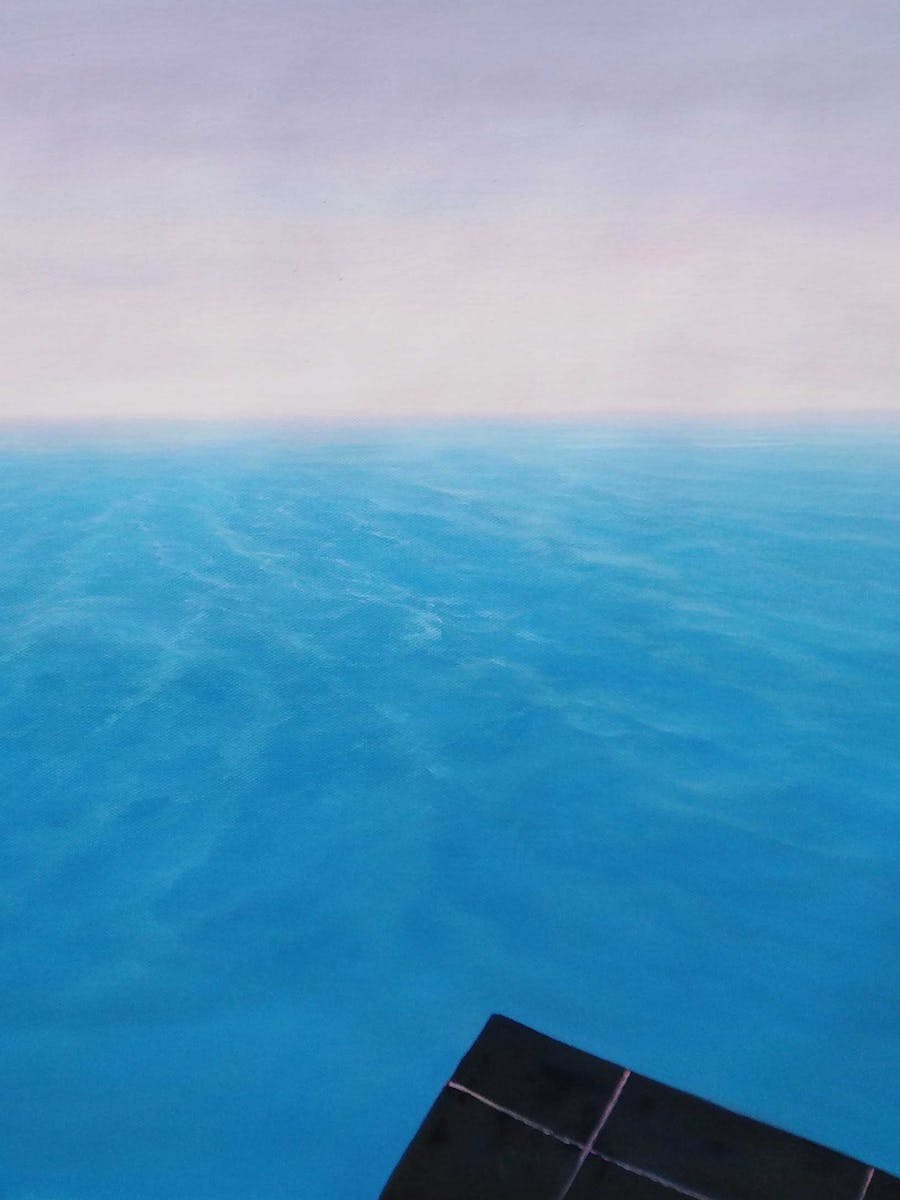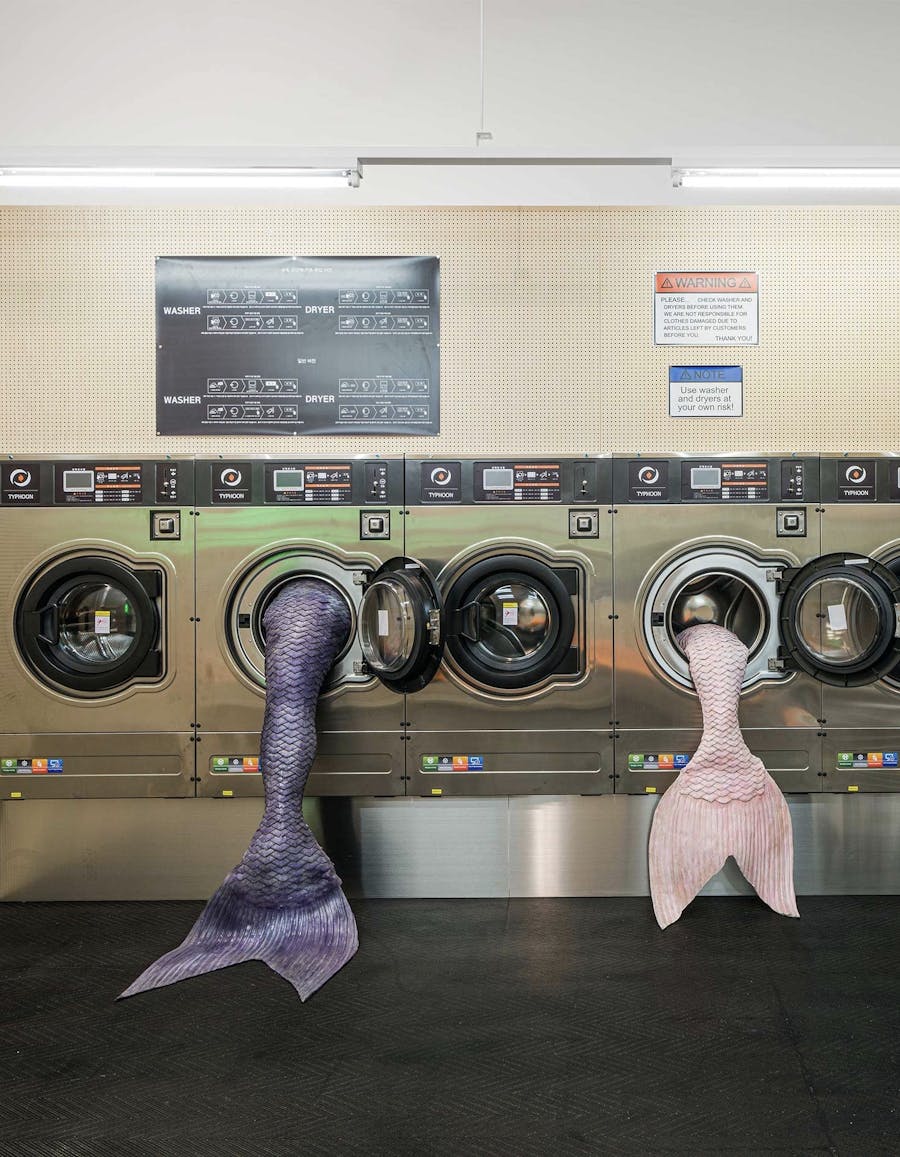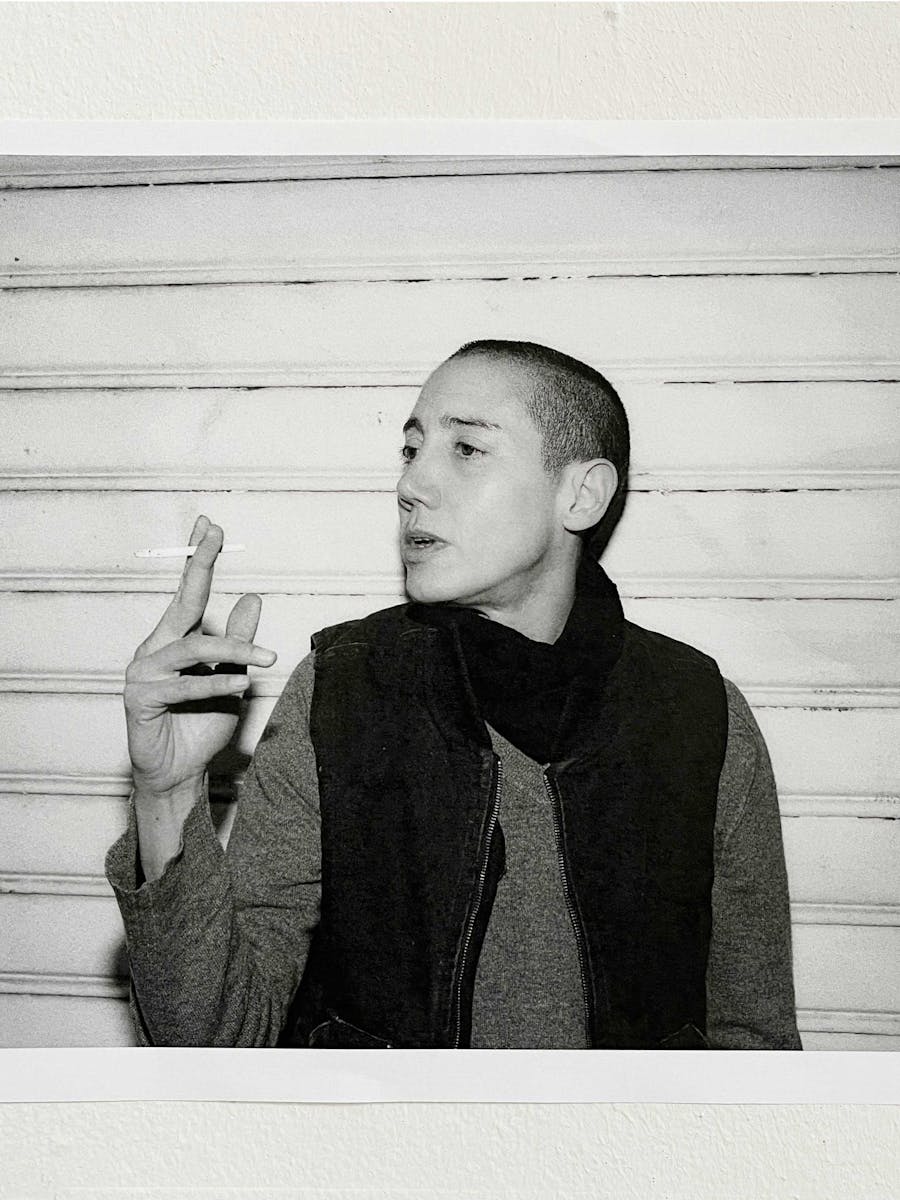Since testing and limiting are functions inherent to the task of writing, this text will confine itself to developing the arsenal of the discourse deployed by fashion. It will avoid getting involved with debates calibrated on its aesthetic, instead concentrating only on quantity, which, given its apparent scientificity, lends itself less readily to criticism.
⏤ Writing about fashion, talking about fashion, wearing fashion – these things always serve to bring an additional dose of existence to the sector. Indeed it would be difficult for fashion to exist, were it not something that could be talked about, discussed, and structured.
⏤ Generalized embryonic phase. Exacerbated immanence. Here is a supplementary fashion discourse that experiences the same limits as those to which the sector itself is subject.
How to weigh up the role of fashion in our eco-system? Can fashion itself measure the volume of change? How many designers, how many labels, how many pieces retain our pixelated attention? Let us observe more closely the meaning of this quantity of discourse produced by fashion, using the yardstick of this era which promises numerous modifications while humanity is tested in its capacity to reinvent itself in a global but nostalgic village: the phygital.
⏤ In this life in which enjoyment is close to 0, to 1, and to an infinity of 1s and 0s, has fashion-time become more quantifiable? Through what process do we now interact with fashion? If the past year was a test of itself, given the extent to which 2020, that extraordinary year, was lacking in the concepts and acts that we had hitherto attributed to the term year (since then indissociable from its own idea), the language of fashion is also undergoing change.
⏤ It is like an echo of the famous fashion calendar, which no longer cares about what month we’re in. Its meaning is in orbit around it, in its semiological periphery. Indeed, some designers have played with the term periphery, leaving the fashion capitals and going elsewhere. As of yet we don’t know what will result: a distant holiday memory or a radically transformed way of life.
Certainly some professionals in the sector are experimenting with a movement away from the zone considered in the collective imaginary as the site where fashion proliferates: the fashion capital. From Jacquemus’s collection ‘L’Amour’, flowering in wheaten fields, to Hedi Slimane, who presented Celine’s main collection in the unexpected location of Monaco, via Burberry, whose shows were set in the English countryside rather than the London jungle, fashioned turned its heels on the symbols of its own heritage, a crushing and constrictive weight.
But these changes of course send a message yet to be entirely decrypted.
⏤ Is fleeing from the spaces that have for so long symbolised fashion’s quantitative importance really refusing it? Do we not also need to unveil a new, lighter programme?
Fashion’s arrival in dwelling spaces where time is dilatory, where the collective imaginary draws more on what is referred to as qualitative time, has not produced a multitude of innovative messages for the sector. Freeze the frame and one can clearly see that fashion is finding it hard to adapt to this new climate. The brands are perpetuating the system of production, staking everything on a message, their image, to create the illusion of change.
While at present a reduced number of silhouettes per collection is excused – not to say understood and appreciated – quantity remains nonetheless easily observable, in contrast to a real aesthetic proposition, which is often lacking.
⏤ Just looking at the Spring-Summer 2021 collections, we can see that there were: 5 similar tops out of 43 looks chez Louis Vuitton; the same jacket 5 times (in different colourways) out of 25 silhouettes chez Mugler; 6 blue shirt dresses and 3 green babydoll dresses out of 56 looks chez Michael Kors…
⏤ There is a notable diminution. But, still more instructive is the choice made by labels to recycle and multiply a single creative proposition, rather than fully accepting the reduction in quantity by presenting the idea in one unique form. The labels take refuge in the production of an image of quantity concealing the homeopathic aesthetic dose.
⏤ Precisely because fashion, as a proposition, is based on number, on intimidatingly huge figures, acknowledged orders, multiple codes. The speed of the adaptation it has undergone functions as a mirage, such is the extent to which fashion prefers to keep the image of quantity by multiplying the same object rather than openly accepting a shift towards smaller numbers.
⏤ To compensate for the limitation in aesthetic innovation a new discourse has arisen, geared towards the labels rather than the clothing.
As for the new generation of designers -- whom it is difficult to dissociate as speakers of discourse from the discourse evoked by the pieces they produce -- these designer-locutors present themselves as characters in a story. Willing bearers of a loosely-defined moral.
⏤ In contrast to ‘the beforetimes’, they create spaces of enunciation in which they seek to develop through their clothes. Yves Saint Laurent would have had difficulty wearing a Mondrian dress, but Telfar Clemens poses proudly next to his Shopping Bag, desirable by virtue of its quality and inclusive by virtue of its price, abandoning the anxieties around the gendering of fashion to the older generations.
⏤ Ludovic de Saint Sernin is the first to model his own designs, all the while insisting on his site that they are made for ‘guys and girls’.
⏤ Christelle Kocher speaks of love in the Koché Spring/Summer 2021 campaign without ever imposing a hierarchy on its various forms, all of them on display.
⏤ In making these choices, identifiable because they are marginal, these designer-locutors assume what the sociologist Ulrich Beck has called ‘the responsibility for their own biography’. They construct narratives around social things which have yet to find words.
In parallel, most designers and designer-locutors tend to skirt around the subject that dare not speak its name, hoping that a terminological aphasia will simply cause it to disappear.
⏤ The climate crisis.
⏤ More permanent than the virological crisis, it has become such a powerful danger that we prefer the immediacy of Covid-19, as one can see in the discourse. Particularly that around prêt-a-porter collections, which makes extensive use of a vocabulary of comfort and cosiness, with a lockdown twist, to the extent of being relayed in the virtual pages of the most famous French magazines.
⏤ Nonetheless, faced with the extreme emergency that is the environmental crisis, fashion has got involved with some large-scale projects which have penetrated the consciousness of the industry.
⏤ By way of example, the designer and programmer Clara Daguin produces unique pieces which explore both forms in space and the geometry of the body illuminated by hypnotising neons.
Another example: the erstwhile employee of the platform Vestiaire Collective, who creates lusted-after collections in ultra-limited, upcycled series, under the name Maison Cléo.
⏤ Finally, Balenciaga, under the impetus of the conceptualiser Demna Gvasalia, presented a Spring-Summer 2021 pre-collection using almost 100% organic fabrics.
But these innovations, each an isolated gesture, enter into the category ‘fashion and luxury’ thanks to the titans of the industry who nurture their own mythology, and that of fashion in general, entirely through their ability to produce an infinite number of messages which borrow from said innovations, prolonging the estrangement from reality.
Even when fashion design is based on techniques sanctioned by the mathematical sciences, fashion itself is not an exact science. There is no need to go looking for truth, even synchronically, to affirm fashion’s claims. The idea that it is enough to speak fashion to make it exist is challenged by emerging labels which push back the limits of discourse, preferring actions.
⏤ The fashion laboratory developed through these quasi-militant innovations is located at the edge of the industry, whilst as its centre a discursive (and sometimes geographical) battle is being waged to deny the reality of this evolution, but not its illusion.
Nonetheless, the case of Alessandro Michele, creative director of Gucci, remains exceptional. If he has not been afraid to speak, often, about the pandemic, he has also made his discourse complex and accessible, precisely because it is tangible. With Michele, polyphony is no longer simply a discursive theory; it is action. There is the collaboration with the director Gus Van Sant; the manifesto in the form of a personal blog produced since 2020; the inclusion of young designers, such as Charles de Vilmorin and Collina Strada, in the campaign ‘Ouverture of something that never ended’.
⏤ Everything indicates that action is no longer imaginatively and discursively individual. Its collective accomplishing is perfectly interpreted by Michele, thus proving his reflexive capacity.
⏤ The secret to the success of the fashion actions of creative directors consists in an image-avowal of collective work, via a private discourse (we can only imagine the numerous discussions necessary to make these things happen) that materialises in visible public actions.
⏤ The idea of the collective can be identified in the brand’s official texts, which do not hesitate to bring its fame into contact with others that are more recent or less fashion-orientated, but above all through the invitation to the receivers to participate in the construction of a new meaning, imaged more than imaginary. While the trend for collectives came from the periphery of fashion, it is no longer marginal thanks to Michele. In contrast to the other big names in the industry, Alessandro Michele is not only delocalising a discourse, he is enunciating a chronotope with entirely new rules. A sort of topographical narrative with a spatial rift in an SF mode à la Donna Haraway.
⏤ This exceptional case of inclusion through a renewal of the meaning of the term collectivity in fashion, moving away from the idea of inspiration as a given to the exhibition of a bringing together of competences, offers a glimpse of a promising, if still fuzzy future.
As for the rest, a few interventions have come to fruition. Some so-called ethical labels have grown in stature. Some groups have started various social and environmental initiatives. To sum up, a few discourses have appeared – concretised by a certain performative power based on the foundations of the old mythology – which have not resonated with the variety of fashion actions recently undertaken. Let us hope that in future these are fewer in quantity but higher in quality.
⏤ Fashion is talking about ecology and sustainable development. We know that the digital space is going to be polluted as a result of all the extra data which seems to offer so much scope. Fashion is talking about slowing down its rhythms of production and a creative scaling-back. We know that inspiration is lacking. Fashion is talking about escapism and spirituality. We know that a new communications campaign is going to appear. Fashion is talking about maintaining growth. We know that luxury is untouchable. Whatever fashion does, the samples of meaning which reach the general public have little or nothing to do with what fashion wants to say about itself.
Fashion is no longer an attractive domain: its narratological value is trad(uc)ed by clothing with a primary use (to cover us up) which the waltz of rhetorical trends cannot dislodge. Abandoned in a corner of the laboratory to make way for phenomena which are more directly observable, since they are exclusively digital, we no longer believe in this fashion which demands to be worn. Of course loss of belief is accompanied by doubt. But is this not a salutary defeat?
The real guinea pigs now are fashion professionals themselves. Tested by the global situation as well as their own sector, fashion actors must demonstrate an immense power of reflexivity to find a way out of the dead end of the received gospel, according to which a chosen few create while Others wear and bear. But the values and beliefs supported by the discourse nowadays suit the Others more than fashion itself, refusing before it speaks. These guinea pigs, unaware of themselves, must henceforth push the boundaries of their knowledge, emerge from the social and lexical field of the sector, to find new methods not to discourse but to interact. And also to avoid becoming total fashion victims, as the activists of Extinction Rebellion warned at the Dior Spring-Summer show 2021.
What is convenient about quantity is that it is so difficult to define it that it can easily become the object of discourse. Accumulation, saturation, suppression, renewal, replacement. This quantification is at the heart of the criticisms directed at the industry and perfuses them. Above all quantity, paradoxically very vague, has engendered the infinity of pixels which allows us today to experience a few vestiges of emotion.
⏤ If sensations are infinite, we can only conclude that fashion and the world have been amputated of several sense since the phygital village became a reality.
Happily, we never leave the testing phase. Everything is a test. From the moment the test comes to market, we forget its experimental status until a better version comes along to replace it, sending the first back to its primary condition, temporarily establishing the second as valid. And fashion needs to think big to notice the small detail with is synonymous with change, with moving forward. Thus, fashion retains an advantage that it no longer dares talk about, without relinquishing it: as long as there is quantity, there are possibilities. The laboratory of fashion can only become all the more global.


